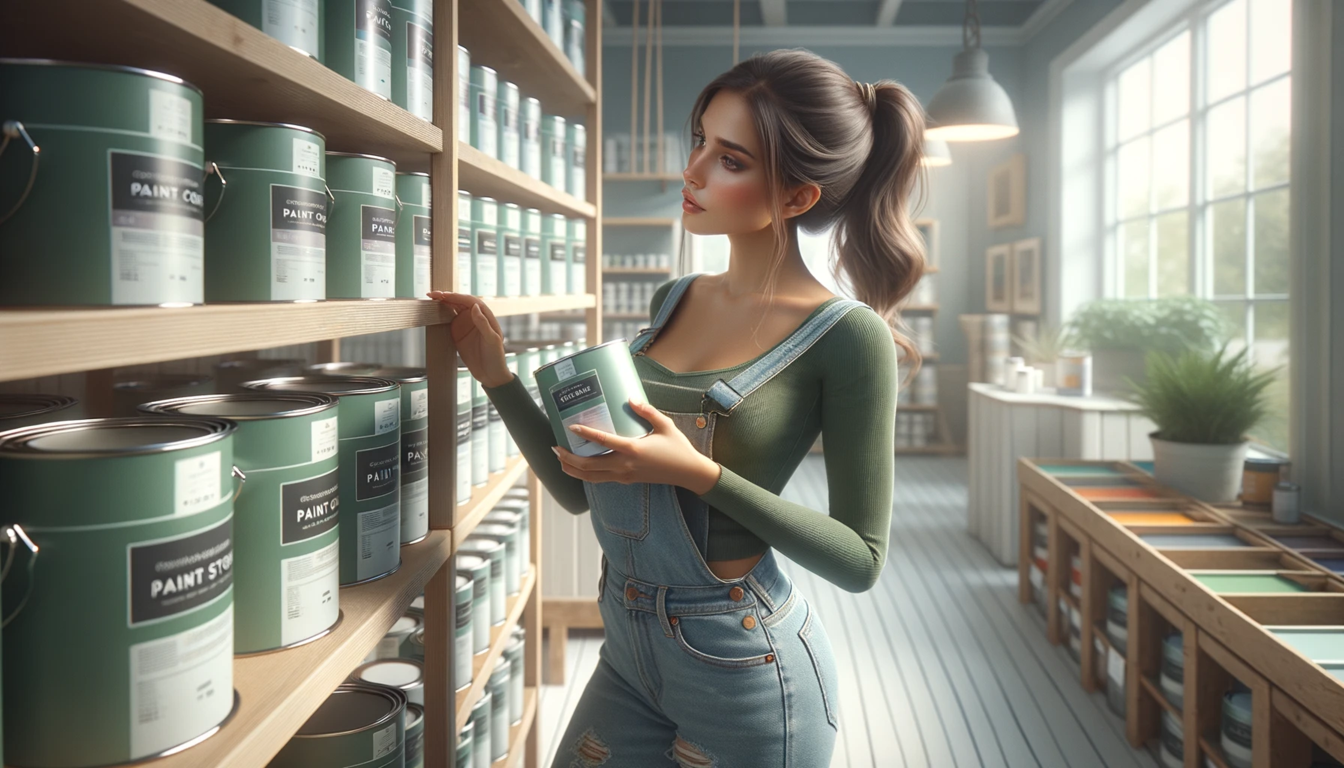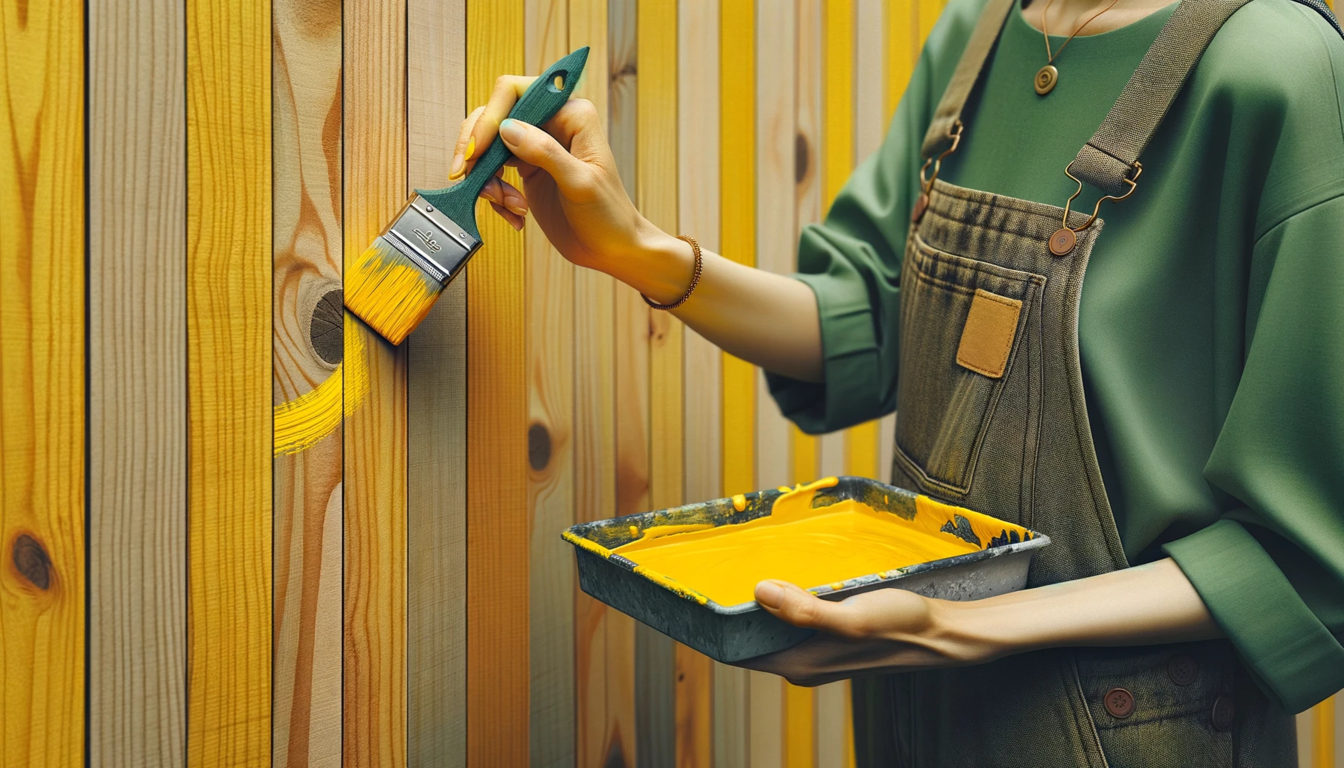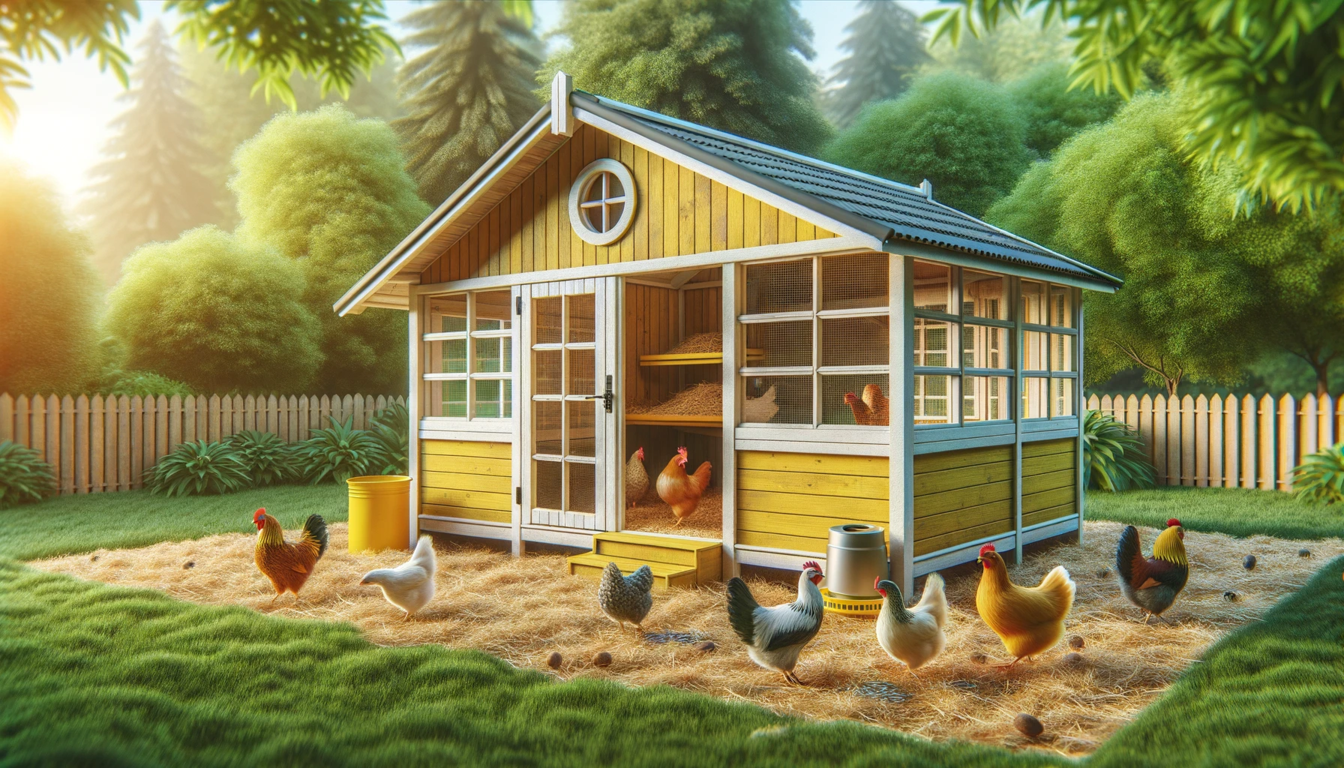
What Paint To Paint A Chicken Coop?
If you're anything like me, your chickens are more than just egg-laying machines; they're part of the family, each with their own quirky personality and feathered flair!
There’s nothing quite like the clucking of happy hens pecking around the homestead.
They gift us with fresh eggs, keep the bugs at bay, and offer endless entertainment with their poultry antics. For me, it's always that one Rooster that fly's at me for no reason.
But here's the coop scoop: our feathered friends are relying on us, not just for food and water, but for a safe and comfy home. That's right, we're talking about their coop – the hen house, the grand 'Cluckingham Palace'!
Now, when it comes to jazzing up their abode, paint is often the first thing that comes to mind. A splash of color can transform a dreary wooden box into a cottage fit for a queen—queen hen, that is! But wait, before you grab that leftover paint from the shed, we need to talk about something serious – the health and well-being of our chickens.
You see, not all paints are created equal. Some are hiding a nefarious secret; they're packed with volatile organic compounds (VOCs) and other toxic ingredients.
These nasties are not only harmful to the earth and our own health, but they can also affect our sensitive, feathered companions and the purity of the eggs we all love to consume. That's why choosing non-toxic, low or no-VOC paint for your chicken coop isn't just a good idea; it's an absolute must for responsible chicken parents.
That's why I'm here to guide you through the whys and hows of selecting the perfect chicken coop paint.
We’ll cluck about why non-toxic paint is the way to go, peck out the best products on the market, and even scratch up some natural alternatives. So, nestle in and let’s give your bantam buddies the safe and beautiful home they deserve! After all, happy hens lay the tastiest eggs!
Why Non-Toxic Paint Matters
Ah, the smell of fresh paint! While for us, it might signal the start of a new project or the refreshing of an old space, for our feathered ladies, it can mean something else entirely.
Let's waddle into the nitty-gritty world of paints and see what's really beneath that glossy sheen.
Firstly, what's this hullabaloo about VOCs, you ask? Volatile Organic Compounds (VOCs) are sneaky little substances that evaporate at room temperature, and they're commonly found in traditional paints.
Sure, they help paint look smooth and last long, but they're notorious for being bad news for air quality.
They frolic into the atmosphere and can cause a coop-load of health problems, ranging from headaches and dizziness to kidney damage in humans. Now, imagine what they can do to our pint-sized peckers!
Chickens, bless their hearts, have delicate respiratory systems. They're sensitive souls, and their bodies don't take kindly to airborne toxins.
Prolonged exposure to high VOC levels can ruffle their feathers, leading to a coop full of irritated, unhealthy hens.
It’s not just about the immediate sniffles or sneezes; the chemicals in regular paints can affect egg quality, making their way into the food chain — and that's not a side dish anyone ordered!
But worry not, dear chicken enthusiast! The world of paint has evolved, and the market has hatched some healthier options.
Low or no-VOC paints have swooped in like superheroes, ready to save the day! They're kinder to Mother Earth, gentler on our noses, and most importantly, safer for our clucking companions. By choosing non-toxic paints, you're voting for happier hens, cleaner eggs, and a clearer conscience.
And let’s face it, when we decide to raise our own chickens, we’re not just in it for the endless supply of farm-fresh omelets.
We’re embracing a lifestyle that’s closer to nature, more sustainable, and conscious of the footprint we leave on this earth. So, using non-toxic paint isn’t just a health-conscious decision; it’s a declaration of the values we stand for!
In the next sections, we’ll dive beak-first into some top-notch paint options that are both safe for your feathered family and pleasing to the eye. Because who says you can’t have the best of both worlds — a colorful chicken castle and a toxin-free flock? Stay tuned, and let’s make your chickens the envy of the barnyard!

Top Picks for Chicken-Safe Coop Paints
Before we dive into our top picks, let's establish the hen-house rules for choosing the safest paints for your feathered family's residence. When selecting the ideal paint for your chicken coop, keep your eyes peeled for these key criteria:
1. Non-Toxic Ingredients: The paint should be free from toxic chemicals, heavy metals, and any other harmful components. Safety first, always!
2. Low or No-VOC: Volatile Organic Compounds (VOCs) are not just harmful to the environment; they can also pose health risks to your chickens. Opt for paints labeled as low-VOC or, even better, no-VOC.
3. Durability and Weather Resistance: Since the coop is outdoors, you'll want paint that can withstand the elements – rain, sun, wind, and maybe the occasional curious peck from a resident hen.
4. Ease of Cleaning: Let's face it, coops get dirty. Look for paint with a finish that's easy to clean to keep your coop looking fresh with minimal effort.
5. Eco-Friendly Certification: If possible, choose paints that have credible eco-friendly certifications. It's an added assurance that the product is environmentally responsible.
Armed with these criteria, you're ready to make an informed choice for your chicken coop's next makeover. Now, let's hatch some plans with our top paint picks that meet these standards:
Alright, fellow poultry aficionados, now that we're all up to speed on why non-toxic paints are the crown jewels of the coop kingdom, it's time for the fun part – shopping for our coop's next haute couture look! So, without further ado, let's unveil the top picks for chicken-safe coop paints that promise style, safety, and durability.
ECOS Paints are a breath of fresh air in the world of non-toxic paints, specifically designed with your pets in mind. Free from VOCs, solvents, and odors, this paint is a safe bet for your cluck crew. It's resistant to various weather conditions, and its durable finish is easy to clean, making those coop upkeep chores a little less daunting.
Users rave about its quick-drying formula, making coop redecorating a breeze. Plus, the hens seem to approve too!
If you're looking for something more natural, this product will make your heart flutter. Made from naturally derived ingredients, this eco-friendly option is perfect for the exterior of coops.
Homesteaders love the natural look it gives to their coops, not to mention the peace of mind knowing it’s safe for their beloved birds.
Bid farewell to toxins with this paint! AFM SafeCoat is known for its commitment to low-toxicity products, and its EcoPaint is no exception. It’s free of VOCs and harmful solvents, offering a safe environment for your hens without compromising on quality or color options.
The low odor and high coverage are a big hit among chicken owners, and the hens seem happier with their upgraded, vibrant digs.
This paint’s rich and creamy texture is matched by its high environmental standards. BioShield specializes in eco-friendly paints and finishes, and their solvent-free wall paint is perfect for your coop's interior and exterior. With zero VOCs and a beautiful matte finish, your coop will be both stylish and safe.
Users are clucking about the beautiful finish and the fact that it's safe for all pets – chickens included!
Choosing any of these paints is a surefire way to ensure your coop becomes the talk of the town (or countryside) for all the right reasons. Remember, the key is to pick paint that's non-toxic, low or no-VOC, durable for outdoor use, and of course, as fabulous as your fine-feathered family!
Up next, we've got a special treat for all you DIYers out there: a handy guide on how to paint your coop like a pro, ensuring it's not just safe, but also snazzy! Grab your paintbrushes, and let's get clucking!

Painting Your Coop: Best Practices
Strap on your overalls and dip those brushes, because we're about to dive into the artistry of coop couture! But before we get our feathers all in a ruffle with excitement, let’s talk strategy. Painting your chicken coop isn’t just a matter of slapping on some color; it requires a thoughtful approach to ensure the safety of your chickens and the longevity of their plush palace. So, here are some best practices to keep in mind when it's time to give your chicken coop the makeover it deserves:
Safety First, Y’all!
- Before you begin, relocate your chickens to a safe, temporary space. Painting can stir up fumes and debris, which are no-nos for your birds.
- Ensure the area is well-ventilated. Outdoor painting is ideal, but if your coop is stationary, open all doors/windows, or use fans to circulate air.
Prep Like a Pro:
- Clean the coop thoroughly. Remove dirt, feathers, and cobwebs. Trust me, paint sticks better to clean surfaces!
- Sand down rough areas, especially if there's old, chipping paint. Smooth surfaces make for smooth results.
- Apply a coat of primer if you’re working with bare wood or making a dramatic color change. It makes your color pop and last longer!
Choose the Right Time:
- Check the weather. Aim for a dry, mild day. Extreme temperatures can mess with paint drying and curing.
- Paint needs time to dry and off-gas, even the low or no-VOC varieties. Plan so your coop has ample empty time before your hens hustle back in.
Application Matters:
- Use the right tools for the job. Brushes are great for precision, rollers cover large areas, and sprayers can speed up the process but require more technique.
- Apply at least two coats for the best coverage and durability. Allow the first coat to dry completely before going in with the second.
The Finishing Touches:
- Consider a protective finish. Some paints benefit from a sealant to protect against moisture and UV damage, extending the life of your color.
- When the paint job is done, give it some time. Wait at least 24-48 hours (or as recommended on the paint can) before reintroducing your chickens to their spruced-up digs.
Maintenance Makes Perfect:
- Keep an eye on the coop's condition as it braves the elements year-round. A quick touch-up now and again keeps your coop looking fresh and extends the time between total repaints.
And there you have it, folks! With these best practices in your back pocket, you're ready to transform your chicken coop from drab to fab, all while keeping your feathered friends safe and sound. So, go unleash your inner Picasso, and give your hens a home they’ll be proud to cluck about! 🎨🐔
Up next, for those who want to tread a different path, we're exploring some natural, quirky alternatives to traditional paints. Spoiler: the results can be absolutely egg-straordinary!
Natural Alternatives - Stains and Other Solutions
If the idea of painting your coop feels a tad conventional for your daring DIY spirit, fear not! Nature herself has a treasure trove of alternatives that are not just safe for your feathered companions, but also add an unparalleled rustic charisma to your coop. Let's talk about a fan favorite: tung oil.
Tung Oil:
Tung oil is a darling of the natural wood-finishing world. Extracted from the seeds of the tung tree, this versatile oil penetrates deep into the wood, offering protection while enhancing the wood grain's natural beauty. It's a great option if you're after a durable, water-resistant finish that's food-safe and, most importantly, hen-safe!
Application: Apply tung oil with a brush or cloth, allowing each coat to fully absorb and dry before adding another. It might take several coats, but the results are definitely worth the patience!
Of course, the world of natural finishes doesn't end here. There's a whole nest of options out there, from homemade concoctions using clay or milk protein to traditional methods like lime washing. Each has its own set of benefits and unique looks, providing endless possibilities for the creative coop connoisseur.
Remember, the goal is to ensure whatever graces the walls of your chicken coop is non-toxic, durable, and safe for those precious residents of yours. So, whether you choose a store-bought eco-friendly product or venture into making your own, the health and happiness of your feathered friends are what truly make your coop a home.

In Summary, Get Painting!
In our journey through the dynamic realm of chicken coop refinishing, we've scratched the surface of why using non-toxic, low or no-VOC paints is crucial for the health of your chickens. We've feathered through the top paint picks that meet rigorous safety and quality criteria, dabbled in best practices for painting your coop, and even ventured into the rustic world of natural alternatives like tung oil.
Choosing the right finish for your chicken coop impacts not just its aesthetic appeal, but more importantly, the well-being of your feathered friends. The products and methods you employ speak volumes about your commitment to the health and happiness of your chickens and the environment.
Enjoyed learning about safe paint options for your chicken coop?
If you're all about keeping things natural and toxin-free in every corner of your homestead, you won't want to miss our latest piece: 3 Wood Stains That Are Safe For Use In The Vegetable Garden.
Dive in to discover how you can keep your veggie patches vibrant and healthy, all while ensuring your garden structures are both beautiful and environmentally friendly. Ready to cultivate a garden that's as safe as it is lush? Read on here! 🌱✨
